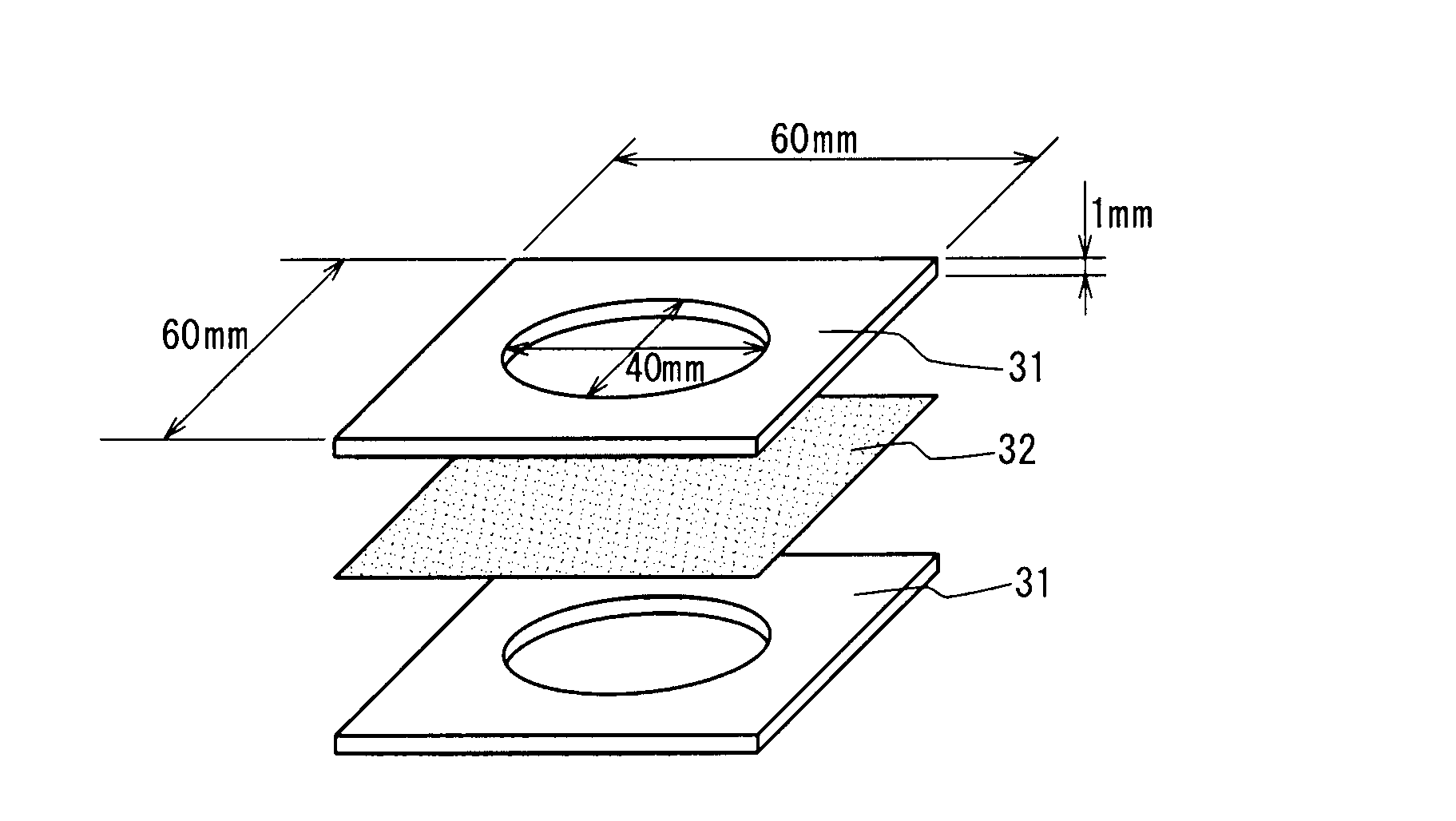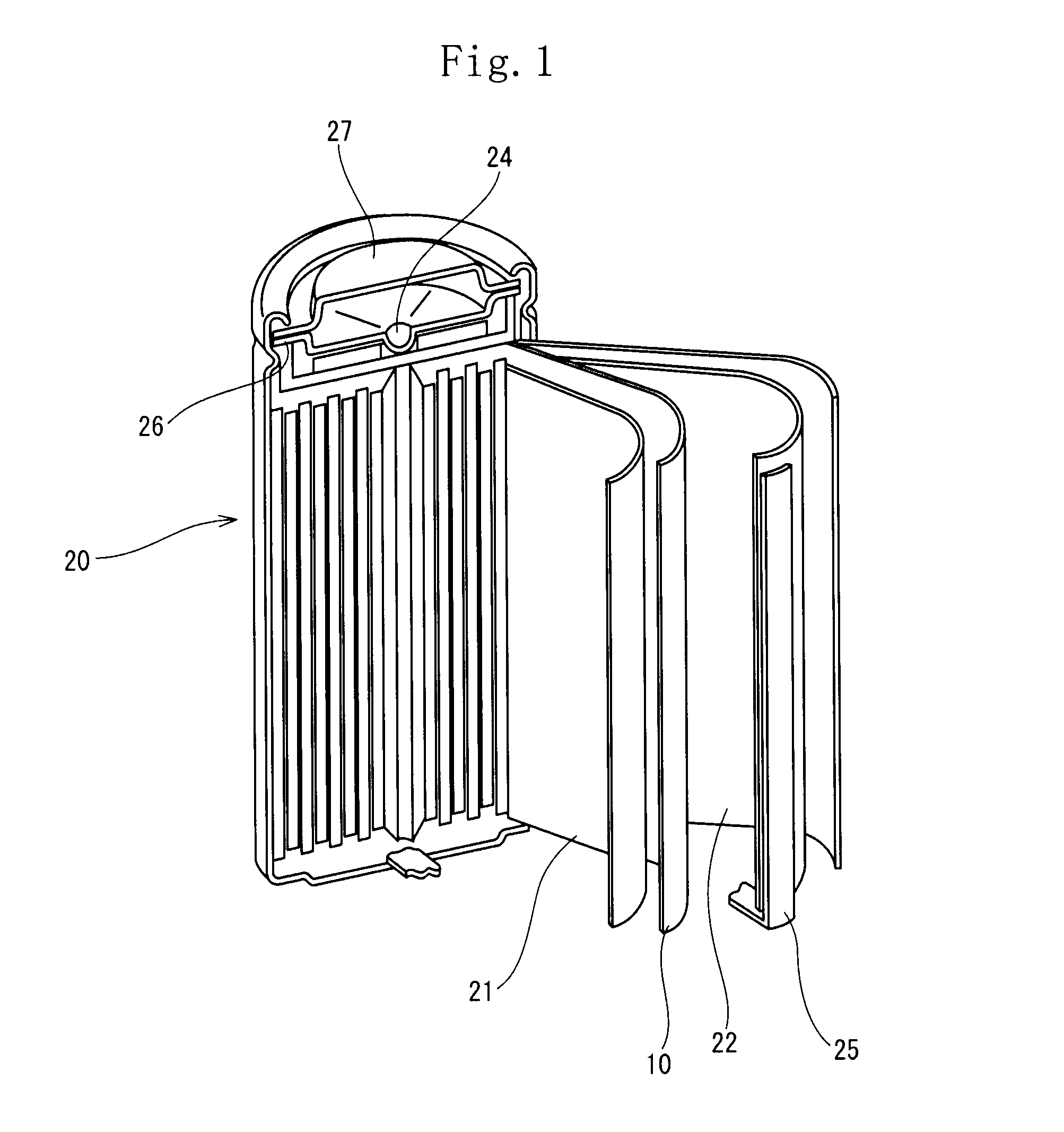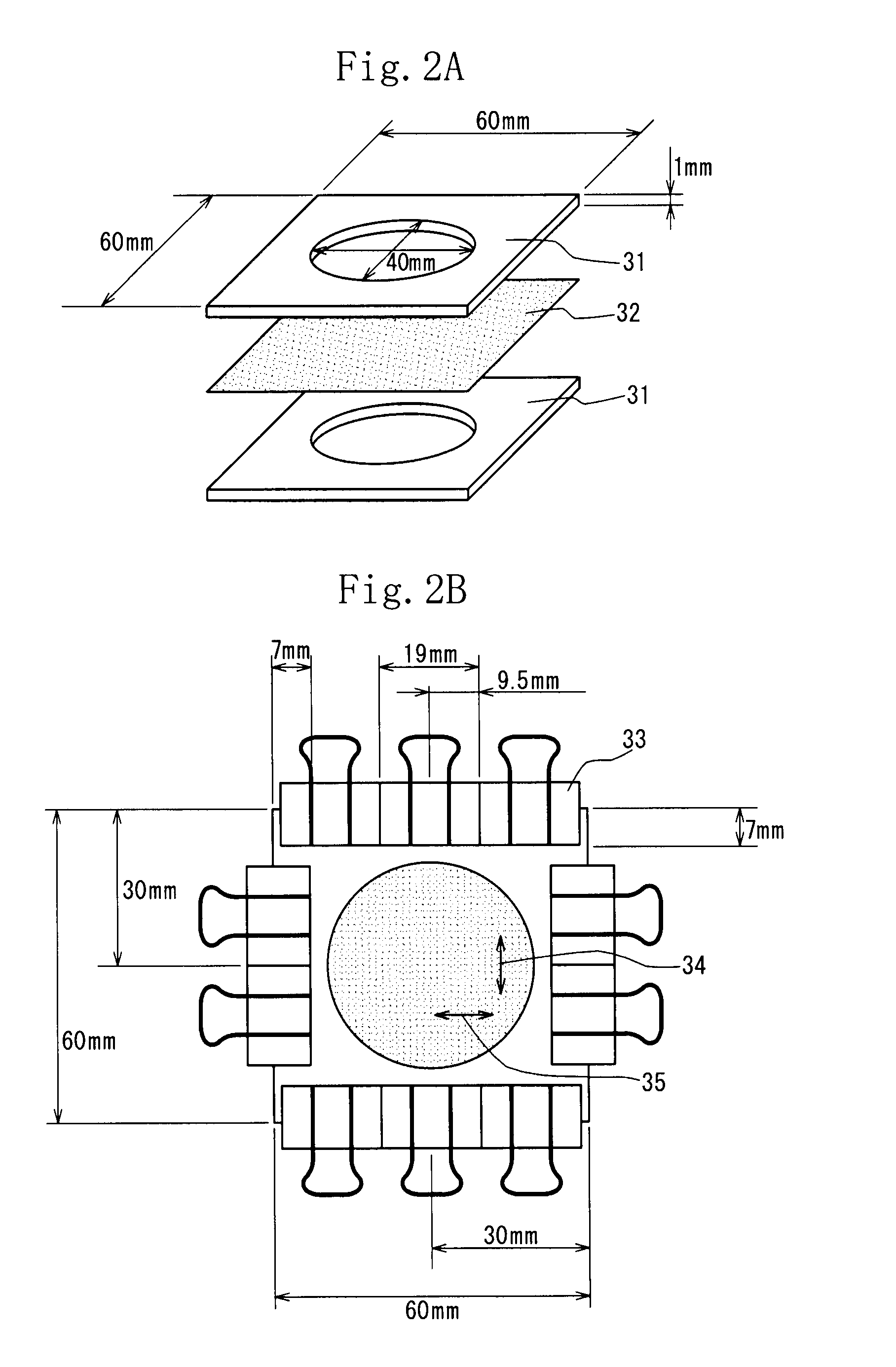Laminated porous film, separator for lithium cell, and cell
a lithium cell and porous film technology, applied in the field of laminated porous film, can solve the problems of contradictory dimensional stability, battery to further generate heat, and inability to use aqueous solution as an electrolyte, and achieve the effects of secure obtaining a sufficient intercommunicable performance, excellent mechanical strength, and sufficient strength
- Summary
- Abstract
- Description
- Claims
- Application Information
AI Technical Summary
Benefits of technology
Problems solved by technology
Method used
Image
Examples
example 1
[0208]0.1 mass parts by mass of 3,9-bis[4-(N-cyclohexylcarbamoyl)phenyl]-2,4,8,10-tetraoxaspiro[5.5]undecane was added to 100 parts by mass of polypropylene resin (Prime polypro F300SV produced by Prime Polymer Corporation, MFR: 3 g / 10 minutes) as the β crystal nucleating agent. The above-described two components were fused and kneaded at 280° C. by using a same-direction twin screw extruder (produced by Toshiba Machine Co., Ltd., diameter: φ40 mm, screw effective length L / D=32) to obtain a pelletized resin composition A1.
[0209]20 parts by mass of hydrogenated petroleum resin (Archon P115 produced by Arakawa Chemical Industries, Ltd.) was added to 80 parts by mass of high-density polyethylene (“Hi-Zex3300F” produced by Prime Polymer Corporation, density: 0.950 g / cm3, MFR: 1.1 g / 10 minutes) serving as polyethylene resin. The above-described two components were fused and kneaded at 230° C. by using the same-direction twin screw extruder (produced by Toshiba Machine Co., Ltd., diameter...
example 2
[0212]After the resin compositions A1 and B1 were layered one upon another similarly to the example 1, they were solidified by cooling them with the casting roll having a temperature of 125° C. to obtain a laminated unporous membrane material.
[0213]The laminated unporous membrane material was subjected to the sequential biaxial stretching to stretch it 3.8 times longer than its original length in the MD at 110° C. and thereafter 2.5 times longer than its original length in the TD at 100° C. Thereafter the laminated unporous membrane material was subjected to heat relaxation by 14% at 115° C. in the TD to obtain a laminated porous film.
example 3
[0214]60 parts by mass of polypropylene copolymer resin (produced by Sumitomo Chemical Co., Ltd., D101, MFR: 0.5 g / 10 minutes) and 0.1 parts by mass of the 3,9-bis[4-(N-cyclohexylcarbamoyl)phenyl]-2,4,8,10-tetraoxaspiro[5.5]undecane serving as the β crystal nucleating agent were added to 40 parts by mass of the polypropylene resin (“Prime polypro” F300SV, MFR: 3 g / 10 minutes produced by Prime Polymer Corporation). The above-described three components were fused and kneaded at 280° C. by using the same-direction twin screw extruder (produced by Toshiba Machine Co., Ltd., diameter: 40 mmφ, screw effective length L / D=32) to obtain a pelletized resin composition A2.
[0215]10 parts by mass of the hydrogenated petroleum resin (Archon P115 produced by Arakawa Chemical Industries, Ltd.) was added to 90 parts by mass of the high-density polyethylene (Hi-Zex3300F produced by Prime Polymer Corporation, density: 0.950 g / cm3, MFR: 1.1 g / 10 minutes) serving as the polyethylene resin. The above-des...
PUM
 Login to View More
Login to View More Abstract
Description
Claims
Application Information
 Login to View More
Login to View More - R&D
- Intellectual Property
- Life Sciences
- Materials
- Tech Scout
- Unparalleled Data Quality
- Higher Quality Content
- 60% Fewer Hallucinations
Browse by: Latest US Patents, China's latest patents, Technical Efficacy Thesaurus, Application Domain, Technology Topic, Popular Technical Reports.
© 2025 PatSnap. All rights reserved.Legal|Privacy policy|Modern Slavery Act Transparency Statement|Sitemap|About US| Contact US: help@patsnap.com



